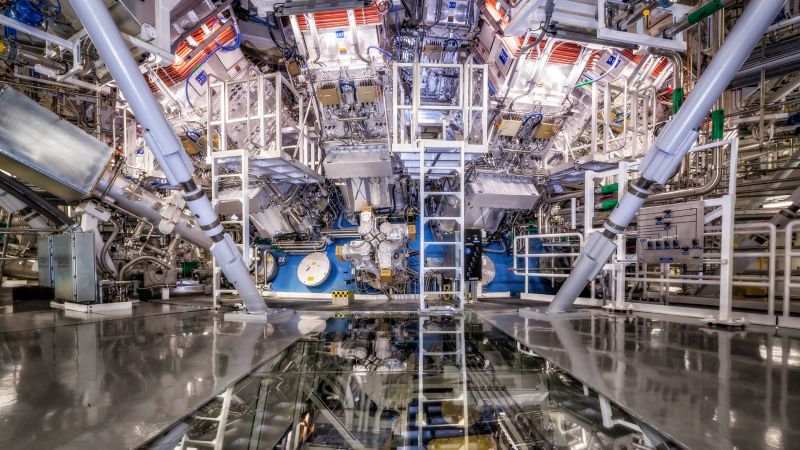Scientists successfully replicate historic nuclear fusion breakthrough three times::Scientists in California make a significant step in what could one day be an important solution to the global climate crisis, driven primarily by burning fossil fuels.



Outta curiosity, how is fusion viable for bomb research? (Ignoring the fact that the world’s current nuclear arsenal is already incredibly powerful, and that 100mega ton bombs have been designed and 50Mton bombs have been tested)
Edit: thank you to all for providing additional context, I see your point regarding more research is valuable for both weapons and energy research, though to say definitively that it is used for weapons research is neither here nor there.
Most fusion attempts try to keep a continuous reaction ongoing.
Tokamak reactors, like JET or ITER do this through a changing magnetic field, which would allow a reaction to keep going for minutes, the goal is somewhere around 10-30min.
Stellerator reactors try to do the same through a closed loop, basically a Möbius band of plasma encircled by magnets. The stellerator topology of Wendelstein 7-X was used as VFX for the closed time loop in Endgame. This complex topology allows the reaction to continue forever. Wendelstein 7-X has managed to keep its reaction for half an hour already.
The NIF is different. It doesn’t try to create a long, ongoing, controlled reaction. It tries to create a nuclear chain reaction for a tiny fraction of a millisecond. Basically a fusion bomb the size of a grain of rice.
The “promise” is that if one were to just repeat this explosion again and again and again, you’d also have something that would almost continually produce energy.
But so far, the NIF has primarily focused on getting as much data as possible about how the first millisecond of a fusion reaction proceeds. The different ways to trigger it, and how it affects the reaction.
The US hasn’t done large scale nuclear testing in decades. Almost everything is now happening in simulations. But the first few milliseconds of the ignition are still impossible to accurately model in a computer. To build a more reliable and stronger bomb, one would need to test the initial part of a fusion reaction in the real world repeatedly.
And that’s where the NIF comes in.
I have no disagreement with your assertion, aside from the neglected aspect of in terms of energy in Vs energy out; the research is likely to help inform nuclear weapons design, yet if they are able to achieve more energy out than in (3mj out Vs 2mj in (though of course they required 300mj to run the lasers to produce this reaction)) then they are providing important data that may help inform different future designs of power generating fusion reactors, this is something that current other designs don’t appear to have achieved afaik.
I doubt they will ever really use this style as a functional form of power generation, but if what they learn from the research allows eventually for a longer functioning fusion reaction that has an overall positive energy output, then it may be rather valuable.
NIF can’t really ever reach Q>1. All the statements of having reached that only include the energy that reaches the capsule. The energy the lasers actually use is orders of magnitude larger.
This theoretical Q>1, where the plasma emits more radiation than it receives, have been reached by other reactors before.
But while tokamak or stellerator designs need a 2-3× improvement to produce more energy than the entire system needs, the NIF would need a 100-1000× improvement to reach that point, which is wholly unrealistic with our current understanding of physics.
You can always run few extra experiments to make your hydrogen bombs smaller or more reliable.
Very true, I don’t disagree there
Currently fielded devices haven’t been tested, all you can do is to do some non-explosive tests and simulate the rest. Data from NIF are used in the latter
deleted by creator
Thermonuclear bombs are a mixture of fission AND fusion, the amount of energy required to achieve fusion requires fission to provide said energy.
Lasers igniting fusion is a bit of a more of a stretch to create a weapon from (the lasers require 300 mega joules of energy which in turn is 2mj of energy into the reaction and 3mj energy out); it may provide context and more information for fusion as a whole but that information is relevant to both weapons and energy research, not one or the other.
deleted by creator
deleted by creator
Yes i immediately deleted my answer after i saw i confused the two. My bad, i wasn’t aware of NIF before.
(Gonna go ahead and start looking it up some more…)